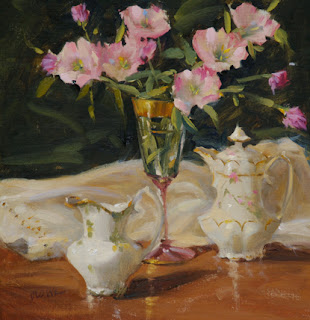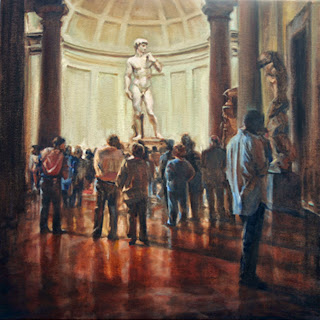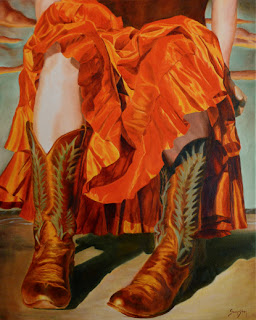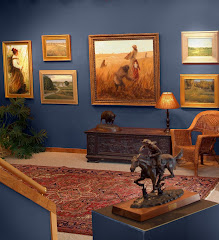Collecting art or other stuff
Posted on January 25, 2015
…some of value…others…not so much.
If there is something on this planet that hasn't been collected, I don’t know what it is. If it has a physical presence, it’s probably been collected by someone, somewhere, at some point.
In my childhood, I collected stamps, coins, and baseball cards. Even today, there is still an urge to collect stuff. Show me a well made box, a beautiful bottle, jar, or vase, and it becomes difficult to find a reason not to keep it.
Show me an artist, and I’ll show you an art book collector.
...and this is just a very small collection
There are two kinds of collectors, the haphazard/recreational collector and the serious/purposeful collector.
This would be, on a good day, a haphazard collection. Junk, most of us would call it.
Here's a serious model car collection, one I wouldn't mind owning.
Most of us are what I would call the haphazard type. We collect stuff because we like it, it makes us feel good, satisfies some need within us, and someday we think it will be worth something.
Art collecting can be like that…and is, for most of us. My wife and I generally fall into that category, with some exceptions. Basically, we buy what we like, of good quality, affordable, and that fits well in our home. When it comes to art, our purchases are seldom planned.
The serious/purposeful collector is totally different. Their approach to collecting is like a good novel. It has a beginning, a middle and an end…and all the individual actors have an important role to play in completing the story.
Political button collection
Lunch boxes are collectible
...so are light bulbs
…even postcards
Although there are some significant differences between the two types of collectors, all of us regardless of what we collect, can certainly benefit from the knowledge and experience of the serious collector.
So, here are a few helpful tips for those collecting art.
1) Only buy art that appeals to you. Be true to your personal taste. Acknowledge that you like certain types of art and don’t be swayed by what is fashionable or what others suggest you should like.
How about some marbles...or paintings of marbles?
…or dolls?
…or maybe thimbles?
OK…spoons!
2) Educate yourself. Familiarize yourself with all types of art. This will help solidify what appeals to you. You may even find that your taste will change. This education may be gained through art history books, museums, galleries, art expos, auctions, art magazines, etc. Figure out why some paintings “connect” with you while others do not.
3) Do your homework. Learn all you can about the artist, credentials, price structure, subject matter, genre of art, etc. How does the quality and price of your chosen painting compare with the artist’s other works…and how will it help complete your collection?
Colored glass collection
4) Be an informed buyer. Learn from those who have knowledge of the art market, gained through personal experience. Establish relationships with other art collectors, galleries, auction houses, etc. Read books about collecting art. Have a variety of sources, not just one or two.
Collection of matchbooks
5) Have a purpose and plan for your collection. The serious collector does not purchase any and everything they like and can afford. Instead, they narrow down and focus very specifically on particulars. For example, California Impressionists between 1940-1960, or Rockport, MA harbor scenes, or the art of William Merritt Chase’s students. Now if your’re collecting Barbie Dolls, you might want to focus on Vintage Barbie’s from 1959-1966 with dark hair and ponytails.
Good collections are well thought-out so that all the pieces in the collection relate to one another in some way. A good collection can enhance one’s understanding of a certain period of art, culture of a particular era, or even stylistic changes during an artist’s career. As each piece adds to the whole, the whole becomes greater than the sum of its parts.
6) Now, my favorite form of collecting would be fine art paintings by my favorite deceased masters. However, don’t view art primarily as an investment. I have a close friend who jokingly, every time I see him, asks how I’m feeling…suggesting that maybe I might have been diagnosed with some rare, incurable disease that will soon result in a dramatic increase in the value of his art collection. Not so fast. Investment potential of art can be somewhat unpredictable.
"Portrait of Rembrandt with Gorget" - 14.87"x 11.38" - Oil (1629)
7) Go for quality. Buy the best you can afford. It’s better to have a small, quality collection rather than a large, average one.
John Pototschnik is an Art Renewal Center Associate Living Master
To view his website click here







































































































